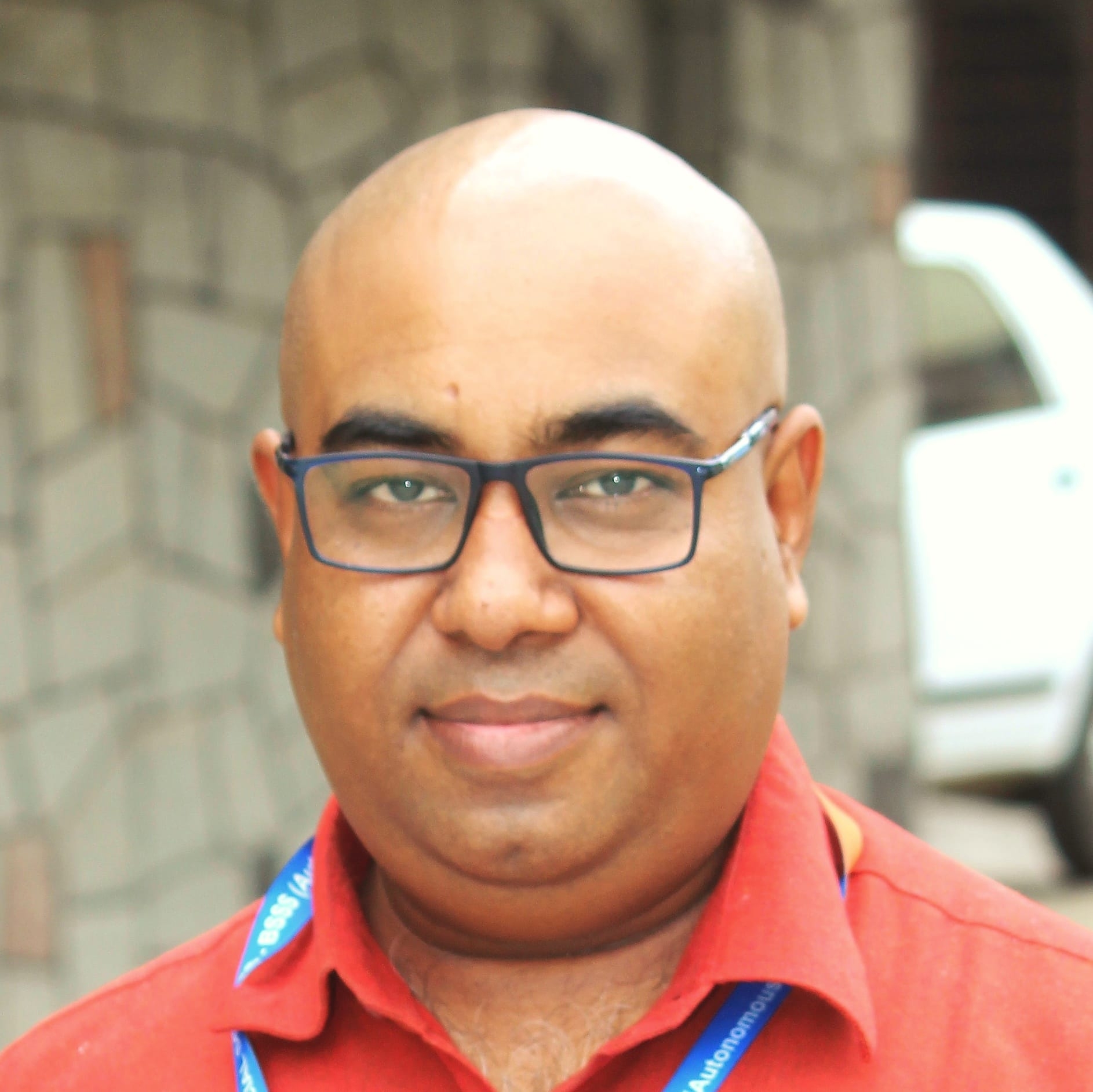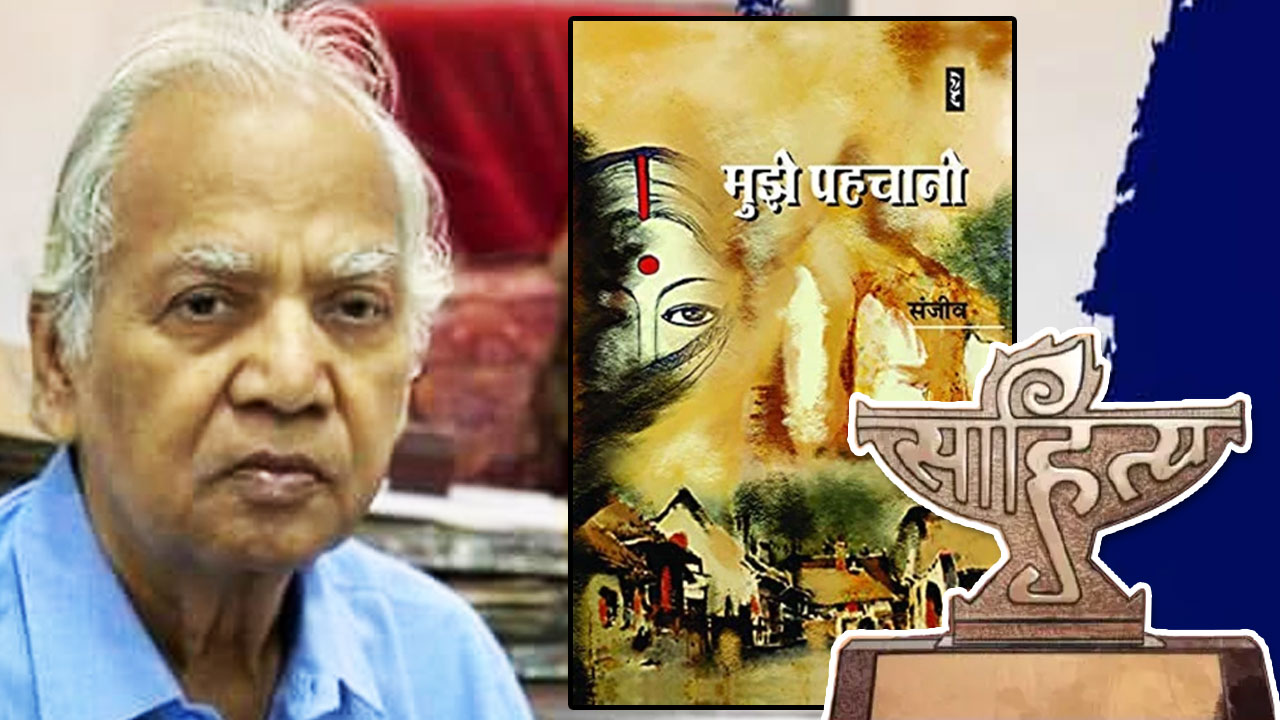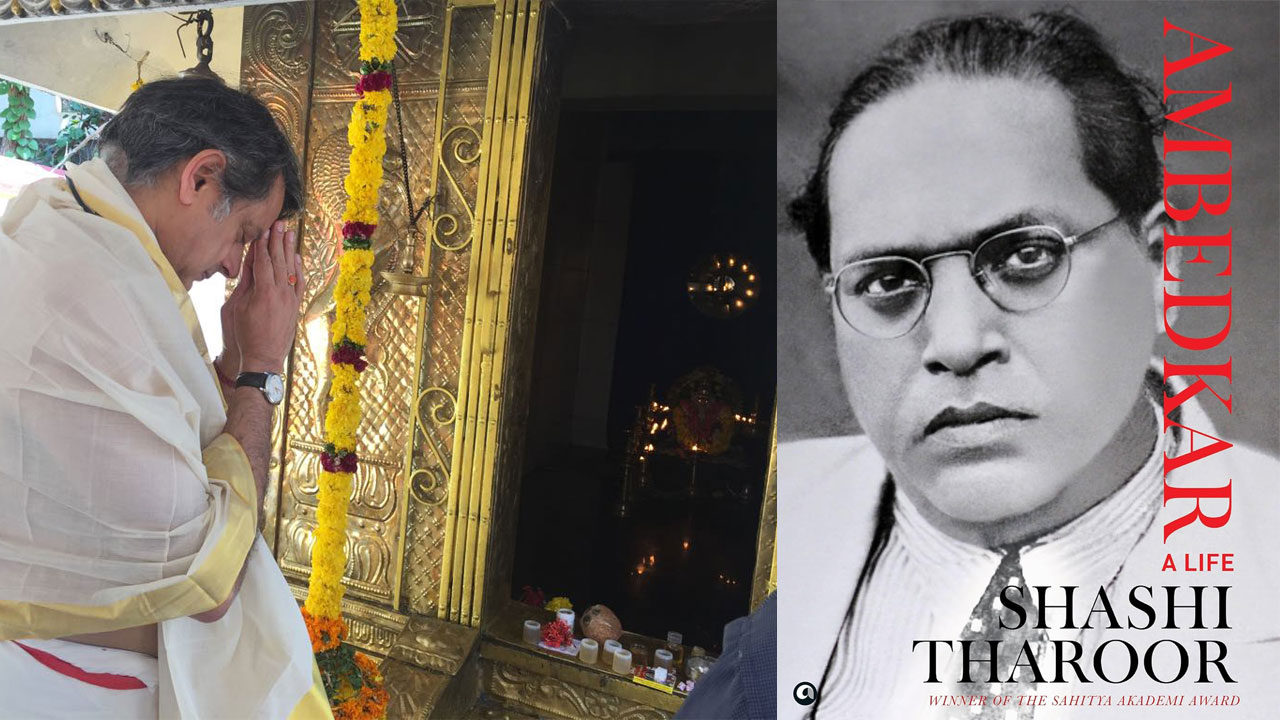How any religion builds its distinct identity and how individuals or a group of people associate(s) themselves with a particular religion is important to understand. It not only defines that specific religion but also gives its adherents a specific identity based on its philosophy, culture, history and beliefs. This identity has a clearly delineated past, present and future – which holds true for all religions and religious communities of the world.
Wherever religion is seen as an ideology or a way of life that binds people together, it has a clear definition: It defines its followers as clearly and unites them. Does this apply to Indian religions and the communities living in India? This is not only a question but also provides us the clue that can help solve thousands of unsolved riddles. It can help us comprehend not only the philosophical, religious, linguistic and historical evolution of the Indian Subcontinent, but also why, despite being adherents of one religion, there is so much discrimination and alienation in the community called the Hindus.
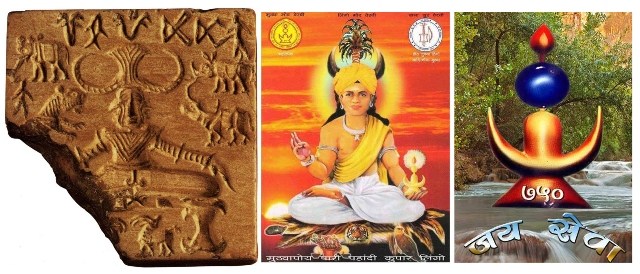
Let us begin with what Dr Ambedkar has to say in his studies. In his Riddles in Hinduism, he raises a logical question on the identity of different religions and their followers. At the outset of the book, Ambedkar writes: “Ask a Parsi why he calls himself a Parsi he will have no difficulty in answering the question … Ask the same question to a Christian. He too will have no difficulty in answering the question … Now ask the same question to a Hindu and there is no doubt that he will be completely bewildered and would not know what to say.”[1] He thus begins the discourse by seeking to establish that a set of beliefs, faith, conduct and rituals are necessary for associating oneself with a particular religion. It also means that these elements should be similar among the adherents of the same religion. People whose conduct and beliefs are different or contradictory to each other cannot be considered to be belonging to the same religion.
From this perspective, despite their internal variations, the followers of the three main Semitic religions of the world – Judaism, Christianity and Islam – have eminently clear and acceptable common ground to declare themselves as followers of their particular religions. These include the fact that they have one book, one prophet and one god. The same is true of Buddhism and Jainism – the two religions born of the Sraman tradition in India. Jains are confined to India but the Buddhists spread all over the world also have some important common beliefs that unite them. These include faith in the Buddha, the Dhammapad, Trisharan Mantra and Tripitikas. Also, they do not believe in the existence of god and the immortality of the soul and adhere to the philosophy of “Shunyata” (emptiness or voidness) and “Kshanvaad” (Momentism). Similarly, the Muslims all over the world have unconditional faith in one Allah, one Quran and one Mohammed.
Now, let us look at India’s main religion – Hinduism. Here the principle of one book, one prophet and one god doesn’t work. In a Hindu family, one member can be a Yogi, another can be a Tantrik and the third can be an atheist. In fact, two people can have mutually contradictory beliefs and still be Hindus. In a sense it appears to be a very progressive and liberal phenomenon. The first impression that one gets is that Indian Hindu families are very secular and liberal as far as religion, sect, beliefs and rituals are concerned. The apologists of Hinduism have declared it is as the most tolerant and inclusive religion of the world. But this is just one small aspect of the vast canvas that Hinduism has become over thousands of years. There are many other hidden aspects that demand more research and clarity at this turning point in history. Especially in the light of facts and reasoning put forward by those who do not regard themselves as Hindus we need to review the entire history of Hinduism, including its innumerable sects and enormous mythology, in a very logical and scientific manner. This is even more necessary because the religious, social and ritualistic beliefs of cultures, described as one, are themselves proclaiming their differences in distinct ways. A new narrative is emerging, especially from the religion and the culture of the hitherto ignored and humiliated communities. This is the original narrative of the indigenous inhabitants and Bahujans of India. Re-examination of ancient beliefs and myths in the light of the new facts has opened up a new world altogether.
Jotirao Phule initiated the process of this re-examination in a very scientific manner. In his book Gulamgiri, he castigated the Hindu mythology and the beliefs based on it in no uncertain terms. He also exposed the conspiracies that lay behind the Hindu symbols.[2] In his Riddles of Hinduism, Dr Ambedkar clearly says that the authors of scriptures have built the religious and social structure of Hinduism by interpreting its mythology. If one uses the interpretations of Phule and Ambedkar, along with those of researchers and writers who came after them, it becomes amply clear that most of the mythological characters and the messages they convey were created mainly with the objective of concealing some uncomfortable truths in order to propagate certain untruths. Works of Debiprasad Chattopadhyaya, D.D. Kosambi and Gail Omvedt clearly show how Indian mythology took shape and what the original inspirations behind the shape and direction were.

Until recently, what was believed to be true based on surmises and logic is being substantiated by evidence collected during field studies. A new tradition based on the re-examination of mythology is taking root. In his exploratory booklet on Mahishasur, Pramod Ranjan hints at an alternative interpretation of the tale of Mahishasur.[3] This booklet proffers evidence that points at a lost Bahujan culture and calls for discovering the lost narrative in its entirety. A new discourse emerges in this booklet particularly against the concepts of auspicious and inauspicious, civilized and uncivilized, and Aryans and non-Aryans being peddled by brahmanical society for thousands of years. Pramod Ranjan’s booklet provides hints of India’s original cultures, philosophies and even lifestyles that have been lost in the mist of Aryan mythological narratives. For instance, it points out that Mahishasur is not only a mythological character but also a revered god and a valiant king for the indigenous Asur and other tribes. No wonder the book has launched a new philosophical and cultural discourse, and live traditions and OBC, Adivasi, Dalit communities, along with thousands of individuals, who observe them are making their mark. A careful study would reveal that brahmanical mythological texts have always targeted these three groups forming India’s Bahujan community. For centuries, these Bahujans have been deprived of their icons, their gods and goddesses, their philosophy of life and their natural resources. We will look deeper into this literary and philosophical thievery going on for centuries. Moving ahead we will see how the so-called mainstream Hindu or brahmanical religion and philosophy mostly consists of the use of what belonged to the Bahujans, against them. We will also see how, at every turning point in history, Bahujans’ icons, their scriptures, including their symbols and their rituals, were stolen and brahmanized. Further, we will see how the materialist, nature-worshipping and matriarchal culture and philosophy of the Bahujans were usurped from them and how the Bahujan icons were portrayed as uncivilized Rakshashas and Daityas. We will attempt to deal with the subject step by step.
Myths written instead of history
Every civilization has a systematically written history. This forms the foundation of its well-organized present and the source of its equally well-organized and well-defined future, too. This well-defined future inspires society or all the people of that country to march towards a common objective. All societies of the world wrote their factual history in one way or the other. These histories reflect their identities and unique philosophies. If a “society” does not have a history, it is merely a conglomeration of people yet to be organized as a society. Living the same kind of life and having shared beliefs and conduct not only builds emotional and logical compatibility between people but also binds them together in the past, the present and the future. It unites them in several other ways.
The fact is that a sense of history is essentially linked to a sense of culture. If one takes this argument further, it is observed that unity over time can exist only in a society which has social equity, or in other words, potential of equality and certainty of equal opportunity. A society can stand only on the foundation of equality and only that can define and nurture its unity over a period of time. We move ahead with the presumption that a sense of history is not only synonymous with a sense of culture but is also the precursor to a sense of morality and justice. That is why every culture, no matter how advanced it might have been, has defined its unique morality in very specific terms and on that basis has proclaimed what is right and what is wrong. This morality has become the basis of its historiography as well. These societies have a clear sense of history and justice. There is no confusion or mythological haze around them. But is this true of India? Has India written its history? Is there anything like a sense of lofty morals or justice in the Indian mythical “history”?
It is surprising and saddening to note that history was never written in this country. What was written were the Puranas, replete with myths and fantasies. It is often said about Indian historiography that India has a past, but no history. In the absence of history, a great majority of the Indians cannot understand the forces that have led to the present. That is why even centuries later, this vast population doesn’t have a road map and philosophy for a shared future. This explains why it had to undergo a long and shameful phase of slavery. India has thousands of religious scriptures and a huge corpus of philosophical writings. We find evidences and clues regarding hundreds of ruling dynasties and tribes, including that of unknown traditions. Foreign travellers have written about the existence of a very extensive and ancient civilization in India. All this shows this country has a long history but it was not chronicled. This was very deliberate, but the reasons have been kept under wraps with great shrewdness. It will be wrong to presume that a sense of history never germinated in this country. It did but it was snuffed out by mythology. We will have to look deeply into how and why myths came into being. On this subject, controversial Indian godman Acharya Rajneesh said that for Indians, time is not linear but cyclical – time extends into eternity and the happenings in society are also infinite, so there is no point in writing them down. He argues that mythology is not about history; it is a compilation of the important lessons and predilections in socio-psychological terms. This is a statement of great import. All Indian religious teachers who believe in the “other world” talk in the same language. By making this statement Rajneesh is speaking the language of the traditional religious scholars and with this one statement he is actually killing the possibility of a sense of history becoming a tool for social change. This is something all religious teachers of his ilk have been doing. That is the reason, despite having great philosophers and mystics like Rajneesh, this country never ever witnessed a revolution that could have brought about a transformation in its divisive and discriminatory character. On the contrary, mysticism and glorification of the other world were used to cloak the basic demands of the people. The lack of a sense of history not only strangles the sense of justice but it also puts paid to all possibilities of a revolution. If we examine our mythology through the lens of the mystical traditions or from the perspective of religious scholars living in ivory towers and followers deeply immersed in religion, we won’t be able to grasp the reality. Those who regarded mythological narratives as divine or admirable never launched any movement for social change, nor did they try to build a discourse in favour of social change. If we follow the scholars deeply influenced by the brahmanical religion and those who respect the direction to the discourse started by them, we will never be able to discover anything meaningful in the conflict between history and mythology.
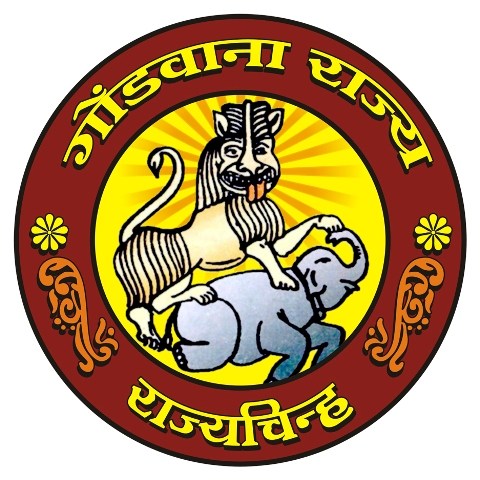
We will be able to solve this mystery only if we accept the theory that Aryans were invaders and the founders of the birth-based Varna and caste system. Ambedkar’s research (1970)[4] indicates that indigenous traditions and rulers of this land were pushed to the lowest rungs of society after gradually depriving them of education and trade. If history is the story of one culture and philosophy, its writing will pose no difficulty. But if the past represents many scattered cultures at war with each other, then history will be written selectively. If victory has been achieved by means of superior military strength and destruction of culture, then the victorious party will keep such triumphs alive in his history. Such sagas are honest and they inspire the future generations of the victors. But, if the competing or the original culture was destroyed by deception or by using deceitful psychological weapons, then writing of true history will be extremely difficult. Chronicling this history would prove that the victors were actually cruel and unprincipled. That is why these victors never wrote any history and the history that was available with the indigenous people in any form was deliberately submerged in the flood of mythological tales.
It is a significant fact that in India, the invaders who destroyed the indigenous culture did so deceitfully by psychological and religious conspiracies.[5] Hence, they never wrote systematically the history of their deceitful deeds. They only wrote mythological tales but could not help leaving some trails of their injustices, trickeries and dishonesties. All the myths clearly show how they unscrupulously tricked the indigenous inhabitants, whom they branded as demons and fiends. They used their good-looking women to honey-trap the valiant indigenous warriors. Not only did they hatch disdainful and cowardly conspiracies against the indigenous people, but they also showed repeatedly how they viewed women – both Aryan and non-Aryan – and their utility. How Vishnu took the form of Mohini and ensured that the elixir of life, which was churned out from the ocean through joint efforts of the Devas and Asurs, went only to the Devas. There are such instances galore in the mythology of the Aryans.[6] Similarly, fearful of the penance of devotees, Indra would dispatch Apsaras each time to disrupt the penance. Indra first used other tactics and as a last resort, deployed women. Thus, we find that women were the weapons of last resort for Indra and the Aryans. There is also a story about how Indra, the king of the Devas, seduced Ahilya. Again, we observe that each time a valiant king or a brilliant philosopher rises to prominence, an uncomfortable Indra begins to hatch conspiracies.
These incidents and references show that with regard to standard morality and ethics the Aryans and their revered gods were unjust, anti-women and barbaric. This is proven by their own myths and scriptures. How could they have chronicled the tradition of their own acts of deceit and cowardice? It does not require much intelligence to guess that by writing such history, the Aryans couldn’t have earned the respect of their descendants. Therefore, they decided against writing a true history, and instead wove myths devoid of logic and a sense of justice and morality. Thus, it becomes clear that the Aryan invaders were backward and barbaric and that the indigenous Asurs were more moral and had an abiding respect for nature, pluralism, women and life. Unlike the nomadic, aggressive and war-mongering Aryans, they were agriculturists. Their philosophy was based on nature and the forces of nature, which was a materialistic philosophy, to a great extent.
Indigenous Asur tribal society and Lokayat philosophy
The society of the Asurs was more or less matriarchal and their belief system was centred on reverence for nature. They had faith in the forces of nature, rather than in any supernatural power, such as a god, and they linked the fertility of women with the fertility of soil. That is why most of their festivals were woman-centric and women enjoyed more rights than men in their families.[7] Even today, traces of the matriarchal system can be found in most tribal societies. Women enjoy more rights in the marital and family affairs in the Gond, Korku, Bhil, Baiga and other tribal communities of Balaghat, Betul and Chhindwara districts and Malwa and Nimar regions of Madhya Pradesh. While paying dowry is the norm in societies that adhere to the Aryan or brahmanical religion, the tradition of paying bride price – in which the groom’s family pays the bride’s family – prevails in tribal communities both in Madhya Pradesh and elsewhere in the country. Norms regarding divorce and re-marriage are straightforward in tribal communities, which apply equally to both men and women. Unlike among the Aryans, marriage in these communities is not an inviolable union that lasts several births. This writer, during his field studies, discovered that most of the beliefs and customs of tribal communities are gender-just and afford women many rights. Several scholars have found this to be the case in their anthropological studies of ancient societies. Many studies have mentioned the existence of an institution called “Ghotul” in the Maria, or Bison-Horn Maria, tribe of Bastar, Chhattisgarh. This institution gives men and women equal right to choose their life partners. Anthropologically and sociologically, Ghotul links Murias, Gonds and Baigas of Bastar, Mundas of Bihar and Nagas of the Northeast.[8]
Similarly, polyandry was common in Adivasi communities, which again gave women a key position in society. Matriarchal family, bride price, Ghotul, divorce, re-marriage and the women’s rights in the event of a divorce, and more importantly, linking the fertility of women with that of the soil, points to the existence of an ancient materialistic culture in India. This is called Lokayat philosophy and is defined as “Lokeshu Aayatah”, ie the philosophy of the world, or the philosophy of this world, which puts nature and its powers on the highest pedestal. Shankaracharya has also accepted that Lokayat is the philosophy of “Prakrat Janah” but he regards it as the inferior philosophy or the philosophy of materialists. This philosophy accorded women a key role in rituals associated with agriculture, hence ancient tribes accorded great importance to village goddesses and forest goddesses. Based on his research, Ambedkar has flagged the emergence of goddesses and mother goddesses in India as a complex riddle, solving which can bring to light many hitherto unknown aspects of the evolution of religion and philosophy in this country. In this respect, both Debiprasad Chattopadhyaya and Ambedkar suggest looking at the matriarchal familial and social system, including importance of goddesses, in the brahmanical religion, with reference to the ancient materialistic traditions of India. While Chattopadhyaya arrives at the conclusion on the basis of his academic research, Ambedkar arrives at it on the basis of his religious philosophy and sociological study of religion.
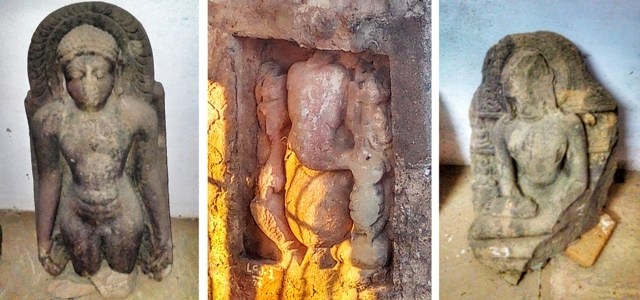
Now, let us examine Ghotul, its functioning and the matriarchal system. The issues of tribal identities cropping up today are closely related to it. This can be ascertained with logical analysis and established. Ghotul’s influence can be seen even today among the Gonds, including Maria, Baiga, Bhil, Oraon and Halba tribes. Their traditions that respect land, forests, water, mountains, including the fertility of women and the soil, are similar. These people, due to their unique way of life, live in forests or have been forced to remain in forests and consequently a different type of culture, or patriarchal culture, has established its hegemony in urban society. With this perspective, only two possibilities emerge: one, the indigenous tribal inhabitants neither practised farming nor established urban culture, and they always lived in the forest; and second, they were the founders of urban culture, too, but subsequently, were forced to take refuge in the forest. We will elaborate this point later, when we discuss in detail the Gond Punem Philosophy and Mahishasur.
We will also see how the materialist, Sraman, atheist, anti-Vedas, indigenous, feminist and Ambedkarite streams had different starting points but a common conclusion. All of them agree that Brahmanism was set up against the original Indian materialist and matriarchal culture as the anti-culture. To set things straight, the culture that the Dalits, indigenous people or feminists are searching or drawing a framework for is actually the ancient and progressive culture of India, against which an anti-culture based on Brahmanism and sentimentalist philosophy was established deceitfully.
Dev-Asur, Brahmin-Kshatriya or Brahmin-Buddhist conflicts
Now, we can delve deeper. Treating the philosophies of the Koya Gonds, Asurs and Buddhists as different aspects of the same philosophy is not only logical but also becoming increasingly relevant.
The conflicts that the myths refer to are very important. Modern researchers have extensively discussed the interpretations and hidden meanings of these myths. The details in various versions of these myths give clues. The Indian mythological tales need to be understood not only in terms of their details and descriptions of events but also in terms of their intent. These myths, in fact, present an alternative history. They are very complex and selective, hence a strictly historical perspective does not explain their symbols and metaphors. They need to be seen in the context of the psychology of dos and don’ts emerging from philosophical and social beliefs.[9] These taboos point at the selective streams of the socio-psychological and philosophical evolution of society, which, ultimately become transformed into the mainstream philosophy of the country or society. In evolutionary terms, these streams, when seen in their totality, seem to be moving from a blurry point of departure, in a clear direction, towards a well-defined point. An analysis of how they were moulded to conform to the mainstream Hindu religion and culture can tell us a lot about intentions and tendencies. It is worth mentioning that these relatively inconsequential sanctions and taboos, and the metaphors and symbols associated with them, have spread to vast swaths of the country in the form of legends and folk tales. They have an uncanny similarity, with their philosophical, religious and socio-psychological implications being the same. This similarity proves that an invader culture destroyed bearers of an ancient culture by using the same deceitful socio-psychological stratagem. This clearly comes through not only in the thinking of Mahatma Jotiba Phule and Dr B.R. Ambedkar, but also in the texts of scholars and religious leaders from the tribal community. Among them, one new and significant name is Dr Motiravan Kangali (1949-2015)[10], who was a scholar of the religious traditions and languages of the Gonds. His perspective on the Gond Punem (Gond philosophy or religion) and the evidence it throws up was completely missing in Indian philosophical or sociological studies. Hence, I will be detailing the beliefs and philosophy of the Gond religion and the evidence they provide.
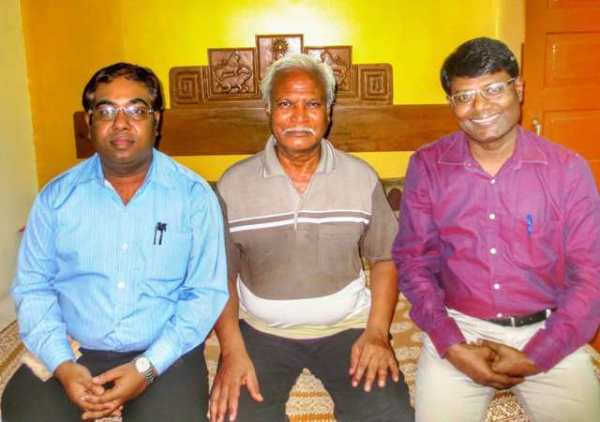
Hundreds of legends on the Dev-Asur conflict with the same socio-psychological implications are prevalent in different states of the country. These, according to Dr Ambedkar, were conflicts between the Brahmins and the Kshatriyas (rightful protectors of the land and rulers of the people).[11] These conflicts took place at every decisive turn in Indian history and the larger canvas has the answer to the riddle of not only Brahmin-Kshatriya and Brahmin-Shudra conflicts but also the miserable condition of Dalits and the indigenous people, including women. The inescapable conclusion from these conflicts is that the Aryans were uncivilized warmongers. Many Rigvedic verses show that the Aryans were warmongers and drunkards.[12] The Aryans found the climate of India very pleasant and decided to settle here and expand their influence. Naturally, they had brought with them their weapons, their animals, their traditions, along with beliefs and their myths.[13] The intermingling of their traditions and myths with the local traditions and myths created a mind-boggling concoction, which are beginning to be understood now. Leads from religion, philosophy, literature, mythology, archaeology and linguistics point at a synthesis. This was a synthesis in the sense that an analysis of legends and folk tales prevalent in different Indian states will reveal the same tendencies. Their taboos and their sanctions, their points of departure and their objectives are the same in socio-psychological terms.
This similarity is clearly visible in the myths that villainize Sambhushek, the most important hero of the Koya Gonds, and subsequently the Asurs and the Buddhists. The Rigveda refers to the Asurs against whom the Surs or the Devas waged battles relentlessly. Similarly, the Buddhist, Hindu and Jain traditions refer to the philosophical conflict between Sramanic and Brahmanic (brahmanical) traditions. Here, it is important to note that the brahmanical tradition, which is the tradition of the Aryans, used deceit, conspiracy and socio-psychological stratagems to conquer the Koya Gonds in the initial phase of the conflict and subsequently, the Asurs. The same conspiracies and stratagems of brahmanical traditions were later used against Buddha, Buddhism, Kabir and Ravidas in order to elevate and establish the brahmanical religion. Aryans shaped and preserved the “history” and the myths in the brahmanical tradition, dividing the enemies into many categories, depending on the stage of their evolution – Asurs, Buddhists and Untouchables. But the Aryans did not divide themselves into categories – they bunched themselves together under a single category of Aryan Brahmins. Dr Ambedkar’s analysis, though, is that the Asurs, Untouchables and Buddhists were Kshatriyas. In the light of the studies undertaken by Debiprasad Chattopadhyaya, Swami Achhootanand and Bhadant Bodhanand Mahasthivir, they are the indigenous inhabitants.
Although Dr Ambedkar did not believe in the theory that the Aryans were foreign invaders, his analysis is useful in the sense that it bares the conspiracy hatched locally for creating an unequal society in India. It shows the Brahmin-Sraman or Brahmin-Kshatriya conflict in all its nakedness. From the perspective of analyzing ancient Indian materialism, the Dev-Asur battles can be considered the Brahmin-Kshatriya conflict. This logic and this method are very important. In the light of this analysis, we can conclude that the representatives of the invader culture used the same technique and the same conspiracies to undermine and defeat the indigenous cultures. What was that technique? What was that socio-psychological, religio-philosophical stratagem? The answer is found in the conspiracies created in the form of mythological tales against Asurs, Buddhists, Kabir and Ravidas. However miniscule, we already have some knowledge of the counter-culture and myths that were used to undermine Buddha, Kabir and the Asurs. But this apart, the same kind of narrative is emerging from Gond philosophy and culture, which has probably not been discussed in discourses of this kind to date.
Gond Punem philosophy and brahmanical religion
The Asurs and their Lokayat philosophy were vilified. They believed in – and their philosophy was about – nature, not soul and god. Even today, tribal society – the indigenous inhabitants – puts greater emphasis on the forces of nature than on the concept of “atma” (soul) and “parmatma” (god). Besides Asurs, there is another very important tribal community called the Gonds. The Gonds, in ancient times, were founders of powerful kingdoms and Gond kings like Dalpatshah ruled over vast stretches of land. Even today, ruins of the forts, temples and other buildings constructed by Dalpatshah and other Gond rulers can be found in Balaghat and other districts of Madhya Pradesh. Archaeological explorations have unearthed the Gond royal insignia – a tiger seated on an elephant – in the ruins of temples and forts in almost all the states of India. This indicates that sometime in the past, Gond culture flourished all over the Indian Subcontinent before becoming a victim of Aryan or brahmanical conspiracies, just as Mahishasur, Ravana, Buddha, Kabir and their sects did.

Dr Kangali’s studies and monumental discovery lent credence to – and almost proved – the belief that Gond Punem philosophy or culture had a pan-Indian presence at one time. His studies describe how the brahmanical religion conspiratorially assimilated the Gond religion and culture long before the rise of Buddhism. The Gonds were relegated to the lower rungs of society and the political system and then driven into the forests. It is important to note that like the Lokayat, Mool Sankhya and Tantra philosophies, the Gond philosophy, too, does not have a god. It does not have the concept of creation or the creator. For the Gonds, nature is supreme and eternal – which was never born and will never end. The educated Gonds of the Mandla and Balaghat districts of Madhya Pradesh say with pride that the word “bhagvan” (god) is their creation and is made up of “bh” (bhoomi or land), “g” (gagan or sky), “v” (vayu or air), “a” (agni or fire) and “n” (neer or water). They also believe that the word Gond is a derivative of the word “bhagvan”. For them, bhagvan is about this world, which does not denote any extra-natural or supernatural power. It gives importance to the forces of nature and not to the power of the creator or the almighty. The Sramanic religions, ie Buddhism and Jainism, also negate the concept of the creator or the almighty. If we examine closely we will find that the Brahmins or Aryans have used the concept of an extra-natural or supernatural power to build the concepts of the other world, the almighty and the soul. Long afterwards, like the first Gond philosopher Pari Kupar Lingo, Buddha too denied the very existence of a supernatural element.
It would be logical to say that like Pari Kupar Lingo, Buddha too founded his philosophy on the bedrock of the philosophy of materialism. Just as Pari Kupar Lingo ignored the supernatural, Buddha also propounded a philosophy based on this world. Buddha, after dwelling on the concept of “Panch Maha Bhootas” [a group of five basic elements, which, according to Hinduism, is the basis of all cosmic creation, namely prithvi (Earth), jal (water), agni (fire), vayu (air) and aakash (ether)], concluded that “aakash” forms the basis of the notions like atma, parmatma and rebirth and the humbug. So, he proposes four Maha Bhootas in place of five. It is true that a detailed elucidation of the philosophy of Lingo is not available but we can find similarities between the basic conceptualizations and beliefs of Pari Kupar Lingo and Buddha. Buddha appears to have been influenced by the philosophy of Pari Kupar Lingo and so does not recognize aakash. Students of philosophy also understand aakash as the basis of the concepts of rebirth and the almighty and the rituals associated with them. Hence, Buddhism, which was a religion in the Sramanic tradition, and the philosophies of Lokayat and Charvak, do not include the element aakash. Just as the ancient Lokayat notion is based on this world, Gond Punem doctrines also accord the highest importance to forces of nature, negating the concepts of the soul and god.
Besides Gonds and other ancient tribal communities, Buddhists and other Sramans, too, do not use the word “bhagvan” for the creator or god. They use it for a person who has acquired knowledge or wisdom. Their “bhagvan” belongs to this world. This thus proves that there is a similarity between the constructs of the indigenous inhabitants and those of the Sramans not only in terms of philosophy but also in terms of mythology and the “science of the origin of this world”. The Sankhya and Tantra schools also hold the same view about the origin of this world.[14] This philosophical unity has important, far-reaching implications. It not only brings the Gonds, the Asurs and the Sramans under one philosophical umbrella but also links the Sankhya and Tantra philosophies with the materialistic philosophy of the Asurs and Sramans in so far as they have a common theory about the origin of the world. Tantra says that the world came into being by the communion of man and nature – the mating of male and female. In the Gond Punem philosophy of Pari Kupar Lingo, nature came into being by the union of two elements Sallam and Gangra. Sallam is a “puna” (positive) element and Gangra a “una” (negative) element.[15] The name of the river, Narmada, is also indicative of this union. According to the Gond folk tales from the Balaghat district of Madhya Pradesh, the name Narmada is formed by combining two words, “Nar-Mada” (male-female). They use this symbolism even today.
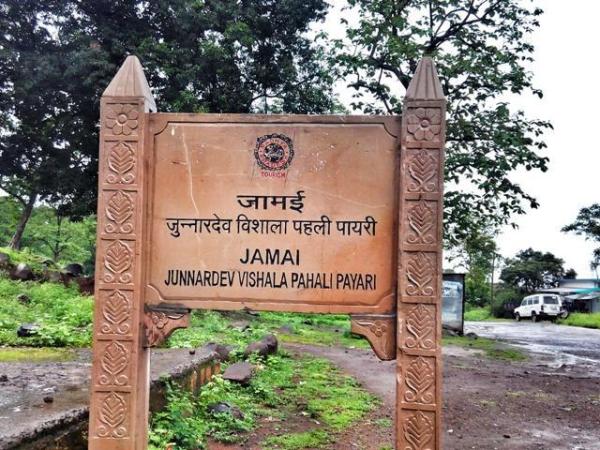
These are signs of an ancient Asur or Lokayat tradition lost in the distant past. This tradition reaches its zenith with Buddha, who negates both soul and god and builds a philosophy based on the four Maha Bhootas. It is worth mentioning here that Buddhist philosophy is also anti-Vedas and the soul does not figure in it. Buddhism is regarded as an atheistic philosophy. Similarly, the Sankhya philosophy, too, does not acknowledge the existence of god and builds its entire worldview, including the theory of the origin of the world, around man and nature. In the subsequent period, in the Gita, Krishna dwells on the similarities between Sankhya and Yoga and says that both lead to the same outcome (salvation or enlightenment). That led to a conjunction of Sankhya and Yoga, which is called “Sankhya-Yoga”. It is worth mentioning Dr Ambedkar’s observation that the Gita was written with the objective to organize a counter-revolution against Buddhism. What “Sankhya-Yoga” tells us is that the brahmanical tradition was trying to use the Gita and Krishna to make the basic principles of Sankhya amenable to its interests. Here, it is significant to note that the Gond Punem philosophy also refers to yogis and tapasvis, who attempt to discover the secrets of nature and human consciousness using their intellect.
Here, we must touch on the book Pari Kupar Lingo Gondi Darshan – a work that is the outcome of a thorough research of the Gond Punem philosophy and other beliefs of the Gonds. This philosophy was created by Pari Kupar Lingo, the first philosopher and guru of the Gond religion, and Dr Kangali, has, for the first time, compiled the principles of this philosophy systematically in the book. This book presents another and the oldest narrative of the Aryans-indigenous people’s conflict, a narrative that is older than even the Aryan-Asur conflict. This narrative is possibly more comprehensive than the other known narratives, and is based on more credible evidence. This narrative is still “alive” in the myths, religious beliefs and folk tales of the Koya Gond Tribals. It is present in their oral tradition even today.
The religion of Asurs, Gonds and indigenous people
As we have seen, Asurs, the followers of the Lokayat religion, were the original inhabitants of India. Their culture was deceitfully destroyed by the Aryans, and by employing socio-psychological ploys they were pushed to the lower rungs of society. This is among the major constructs of Dr Ambedkar. Similarly, Dr Motiravan Kangali, an expert on Gond culture and religion, through his field studies, has established that the superior achievements of the culture of the indigenous inhabitants were assimilated into the brahmanical or Aryan religion – so much so that now it has become very difficult to even identify them. His conclusions were based on the thousands of strands culled from the oral tradition of Gond religion, proverbs and folk songs. When he put them together, his conclusions were similar to those of Swami Achhootanand, Bhadant Bodhanand, Ambedkar, Jotirao Phule and Debiprasad Chattopadhyaya. His conclusion is that the institution of Ghotul is the link between Gonds and other tribal communities and they are all inheritors of a great but lost culture. This culture was destroyed deceitfully and its contents appropriated cunningly. The list of the symbols and characters thus appropriated from this ancient culture is indeed long. For instance, Kangali says that before the Aryan Brahmin priests renamed her, Hindu goddess Balmleshwari Devi was the “Bamlai Dai” of the Gonds. Similarly, “Sambhushek” became the Mahadev of Hindus and the Gond’s sacred land “Penkmedi” became Pachmarhi. Likewise, there are dozens of such symbols, characters and practices that were stolen and then appropriated by the brahmanical religion with slight changes.[16]
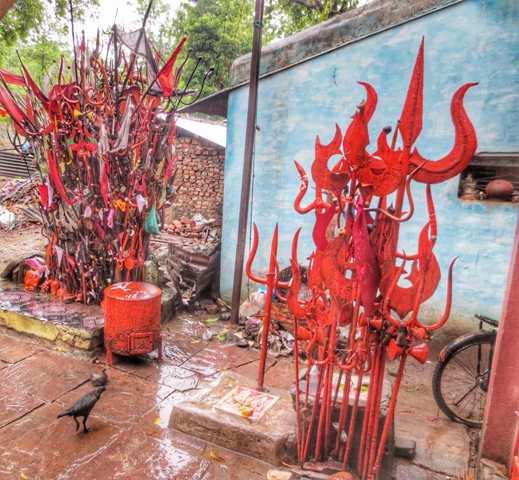
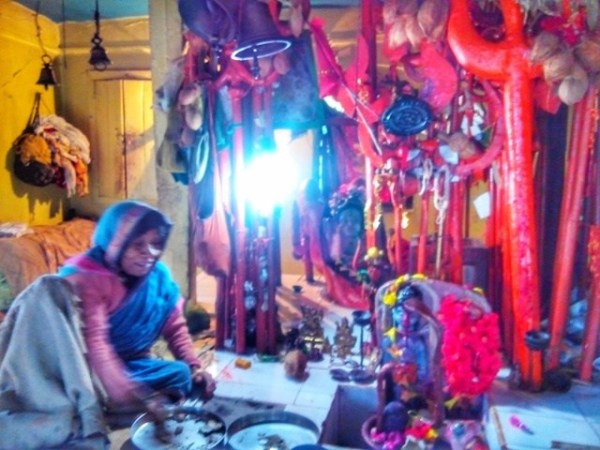
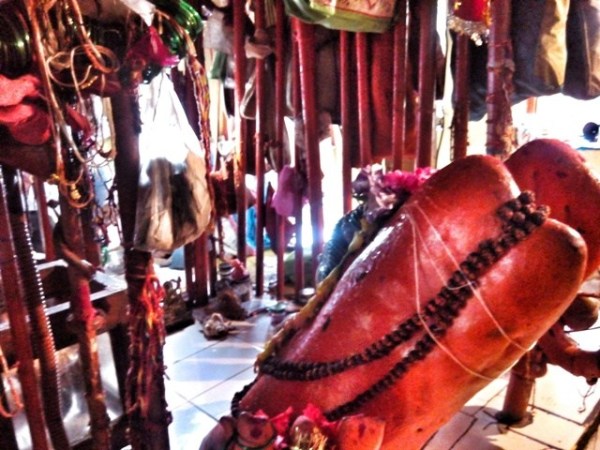
Of course, his conclusions, based on his extensive study in collaboration with other members of the Gond community, can be questioned, but there are some facts that lend credence to his claims. The first is that he himself comes from the Gond community and has an insider’s knowledge based on first-hand experience of the Gond language, religion, philosophy and culture. Second, he is the first scholar to have successfully deciphered the Harappan script using the Gondi grammar rules. On the basis of principles of linguistics, he establishes that there is a great deal of similarity between the socio-religious-cultural values of the Indus Valley Civilization and those of today’s Gonds.[17] The similarity of language leads his research to establish that Gondi is a proto-Dravidian language and the progenitor of all the Dravidian languages of today. This claim sounds credible, as even today, we can find similarities between the Dravidian languages and Gondi.
The studies of Professor S.N. Dasgupta[18] show that the Asurs used to bury their dead, as mentioned in the Changyopanishad. This practice exists even today in some tribal communities, including the Gonds. A study of the Upanishads reveals that ancient tribal society, ie Asurs, and their worldview predated Buddha’s. The materialism that the Asurs or the Lokayat doctrine propounded was not well developed but it is older than Buddha’s.[19] This also explains why, along with the Gond royal insignia, idols of Sraman and Tantra traditions are also found in the ancient temples and forts of Gonds. Carvings of Buddha, Mahavira, Ganpati and a couple in coital position were excavated at an ancient fort of the Gond Netam dynasty at Lanji in Balaghat district of Madhya Pradesh. Chattopadhyaya’s studies show that Ganpati was the totem or icon or god of an ancient indigenous community, which was later assimilated in the brahmanical religion. Hence, the presence of Ganpati’s idol at this fort is indicative of its revered status in Lokayat or Asur tradition.
The photographs taken by this writer during his Balaghat visit have uncanny similarities with the statues at Konark Temple. These discoveries are not new. But it is probably for the first time that we have a philosophical-historical perspective on these discoveries.
Thus, there are similarities between the Asur and the Sraman traditions and it is clear that Lokayat or ancient Asur beliefs predated Buddha. Subsequently, Lokayat beliefs were taken to their zenith by the Buddhist philosophy. That is why, in keeping with its original tradition, Buddhist philosophy negates the concepts of the other world and the almighty and talks of a philosophy, religion and morality based on the four Maha Bhootas. Unlike the Hindu or brahmanical religion, they do not add “aakash” to the list of the Maha Bhootas and thus obviate the development of the concept of the other world. In this context, we also need to understand the similarity between stratagems used against the Asurs and the Sramans by the brahmanical religion. The myths about Asurs, who are ancient Lokayats, contain several crucial clues.
In the ancient Indian religious literature, Brahaspati is considered the guru of the Surs or the Devs. It is said that he corrupted the Asurs by propagating the Lokayat philosophy among them, which, in turn made them irreligious and immoral and led to their ruin. Similarly, Buddha, who was shown as an avatar of Vishnu, was vilified for “misleading the people” by propagating his anti-vedic, atheistic and materialistic philosophy.[20] There was similar propaganda against Kabir in legends, about which Dr Dharamveer[21] has mentioned in his book Kabir: Khasam Khushi Kyon Hoy. This book played a key role in freeing Kabir from the stranglehold of brahmanical hypocrisy. Narrating a legend that is popular around Varanasi, Dr Dharmveer writes, once Kabir left his physical body behind and went on a pilgrimage. Meanwhile, according to the legend, a ghost entered his body and created anti-Veda and anti-brahmanical religious literature under his name, and when Kabir returned the ghost made good his escape. Hence, the brahmanical logic is that Kabir’s teachings should not be taken seriously as they are not actually his.
We observe that the stratagems used to run down ancient Asurs, then the Sramans, among whom Buddha was the most important one, then saints like Kabir, were all similar. During our detailed discussion on Gond Punem philosophy later, we will see how Sambhushek (the revered ancestor of Gonds) was also the target of such stratagems. Their greatness was challenged not logically or philosophically but through conspiracies and socio-psychological deceit. The other constructs of Dr Kangali, including his exposition of the Gond Punem philosophy, show that Mahadev, Parvati, Sati and Kali were also the mythological characters of the Gonds, which, along with the symbols and rituals associated with their philosophy, were usurped by the brahmanical religion. So, we can conclude that the ancient Asurs and present-day Gonds, Buddhists, Ravidasis and Kabirpanthis belong to one stock and their eternal enemies, Devs or Surs or Aryans or Brahmins, are one and the same.
Mahadev, Parvati and Mahishasur in Gond Punem Philosophy
Mahadev or Shambhu or Shiva is one of the most important gods in the pantheon of the brahmanical religion prevalent today. In the tales that are part of the Gond culture, characters similar to Shiva, his consort Parvati, and Gauri and Sati are found. One may argue that these symbols and characters have been taken by the Gonds from the Hindu or brahmanical religion. But this argument does not stand to reason. In known history, the Koya Gonds or for that matter all tribal communities, were forest dwellers and had no place in the Aryan varna system. They had no social or political role in Aryan society. There was no way they could have learnt Sanskrit, the sacred language of the brahmanical religion, nor could they have entered the brahmanical temples and be initiated into Hinduism. On the contrary, there are numerous references to their wars and conflicts with the Aryans. So, it would be ridiculous to imagine, allege or suggest that they were initiated into Aryan socio-religious institutions and processes, adopted brahmanical symbols and used them in their language and mythology – from Madurai in the far south, to Konark, Ajanta-Ellora, Gadhchiroli and Amarkantak in central India, to Kandahar, Harappa and Mohenjo-daro in the far west.

It would be more logical and useful to juxtapose the conspiracies against Asurs, Buddhists and Kabir as well as Gond religion and Sambhushek with the rise of the early religious form of the Aryans. Such an exercise will solve many riddles and explain many contradictions in the brahmanical religious philosophy and mythology. It can be argued that the Aryans’ first successful experiment was their counter-culture against Asur culture. But this writer claims that the Aryans were faced with the culture founded by the Koya Gonds and Sambhushek even earlier. Subsequently, the Aryans assimilated this culture selectively and used it to develop a new set of beliefs and rituals. This must have happened over a period and once that was done, the Aryans created two distinct classes of people, Devas and Asurs, and used the classification to weave their mythology and mythological history.
This claim is also substantiated by the fact that Sambhushek, who finds mention in the oral tradition of the Gonds, later became the Mahadev of Hindus. There are evidences in the Vedic and Puranic literature to show that Shiva or Mahadev did not emerge suddenly. In some places, there seems to be hardly anything that distinguishes Ganesh from Mahadev. The emergence and existence of Mahadev and Ganesh in the Hindu tradition is thus complex. Another reason it is logical to conclude that the Aryan-Gond conflict predated the Dev-Asur conflict is the fact that the latter took place long after the brahmanical Aryans had assimilated the Gond culture and its gods, especially Sambhushek, who had already become Mahadev. The brahmanical version of the Dev-Asur battle frequently mentions Mahadev or Shambhu as the god who joins the battle to save the Aryans or who helps the Aryans or Devas through Brahma, Vishnu or some other god or goddess.
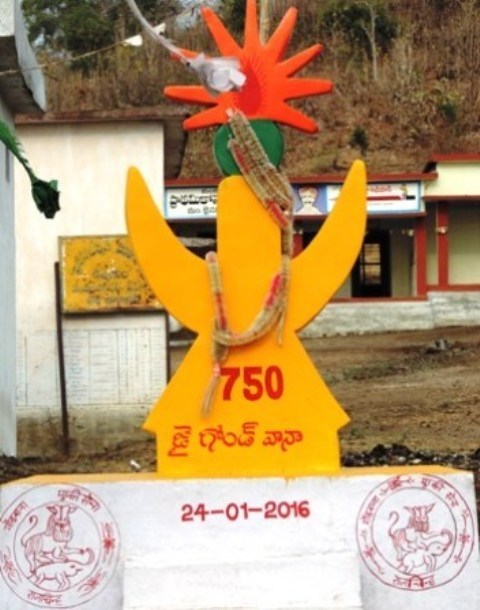
Dr Kangali’s logical analysis of Gond oral tradition can help us solve another riddle – the ghastly appearance of Mahadev. It is difficult to guess why any society would portray its god in a loathsome manner. Why would it present him as an abominable creature? Mahadev or Shambhu is different from the Aryans – different from Indra and other gods such as Vishnu that emerged later – both in terms of his conduct and his religious-philosophical beliefs. He is considered powerful and hideous at the same time. Later, Mahishasur is also portrayed as an exceptionally valiant but equally despicable demon. The most important Aryan god Indra or Vishnu is always well-groomed, cultured and adorned while Mahadev has long unkempt hair, dwells in cremation grounds and is the god of ghosts, spirits and other despicable creatures. Subsequently, however, he not only becomes a god but is portrayed as being mightier than Indra and part of the brahmanical triumvirate of Brahma-Vishnu-Mahesh. This is exactly the same riddle that would later feature Mahishasur and Ganesh.
The difference in the beliefs about and the acceptability of Mahadev and Mahishasur points at another fact. Though the Aryans had turned Sambhushek into Mahadev, his influence was so great that it was difficult to efface him from the collective psyche. Despite being usurped and branded as a person addicted to intoxicants, frightening and lascivious, he continued to be revered by people. This is probably the reason that compelled Aryans to include him in the trinity of gods. Ganesh or Ganpati was also similarly usurped. There are contradictions in the references to him in the old scriptures and the relatively new ones. Sambhushek and Ganesh continued to be revered in popular imagination but Mahishasur was forgotten as a revered figure – he is remembered as a villain instead. The answer to this riddle can also be arrived at through logical reasoning.
Here, it is important to understand that Sambhushek and Ganpati are not the names of individuals. In Gond Punem philosophy, we find at least 88 Sambhusheks mentioned. Similarly, the Rigveda and the Puranas refer to many Ganeshas or Ganpatis. The fact is that these were not names, but titles. Hence, their glory did not fade away with the passage of time and the brahmanical tradition, despite all its cunning, could not uproot them. In contrast, since Mahishasur was probably the name of a person – and not a title with historical and cultural sweep – despite all his valour and successes, he was forgotten. Hence, the survival of Sambhushek and Ganpati as Mahadev and Vighnaharta, respectively, is not survival of the memory of people, but the memory of institutions. The memory of Mahishasur was lost in the haze of time, but the Asur tradition and society has survived. Asur families exist even today, no matter how small in number they may be.
There could be another explanation why Mahishasur was not accepted as an icon like Mahadev but portrayed as a demon. Why was Mahadev a hero? Parvati was sent to honey-trap Sambhushek but instead, she fell in love with Sambhushek and became his wife and disciple. The Aryan stratagem boomeranged. The deceitful murder of Parvati that followed would have evoked sympathy and then reverence among the masses for both Parvati and Sambhushek. But Durga, who was sent on a similar mission to Mahishasur, succeeded and managed to kill him. If we treat Sambhushek and Mahishasur as different entities then both the incidents are similar apart from the one difference. It is the difference in outcome that is shaping historical perceptions.
But there could be another explanation, which is not easily refutable. The myth of Sambhushek and Parvati appears to be much older than that of Mahishasur. First, Aryans would have assimilated Sambhushek and Parbati of ancient Gonds as Shambhu and Parvati. Subsequently, after defeating the Koya Gonds, the Aryans would have encountered Asurs. They would have employed the same stratagem against the Asurs and succeeded. The differences between these narratives of the two tribal communities are quite revealing in themselves. The differences between the two tribes, including in their power structures, may account for the differences in their narratives and in how they were transmitted from one generation to the next. The different ways of preservation and transmission of myths may have also contributed to the different mythical identities of Mahishasur and Shiv.
It is possible that Asurs were a weakened and disorganized agriculturalist forest-dwelling society that emerged after the Gond strongholds came apart. If this premise is assumed to be correct, the obvious conclusion is that since the Gonds were a superior civilization with a developed philosophical understanding, they saw victory and defeat in philosophical and religious terms and thus preserved the memories of their icon. In contrast, the Asurs have been able to remember its icon only in terms of victory and defeat in war. Based on these arguments, Mahishasur and Sambhushek can be seen both as one person and two different people. If the two names refer to one person, then the different tribes remembered him differently in keeping with their perceptions and tendencies. And if they were different people, the different tales in themselves indicate that it was so. But even if they were different people, the two narratives have one common strand: Aryans deployed women against valiant indigenous inhabitants.
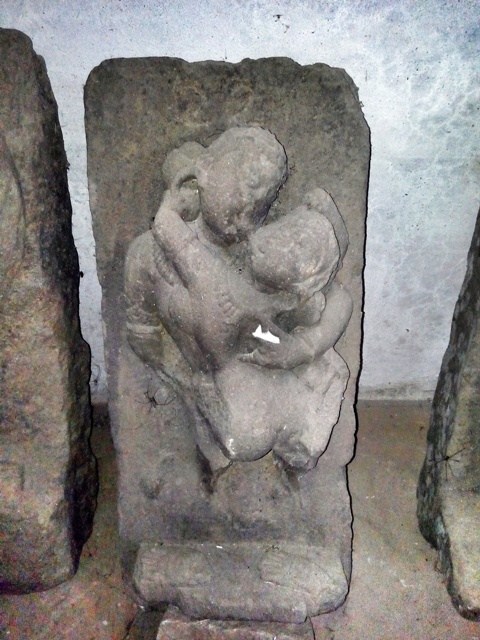
If we ponder the question of whether Mahishasur was a person or an institution, our assumption that Mahishasur was a person appears to be incorrect in the light of some recent findings. The field studies of Pramod Ranjan (2014) show that Mahishasur (the name given to him by the Brahmins) was known by numerous other local names, including Maikasur, Bhainsasur, Mhasoba and Mahtoba. It is thus clear that whatever may have been the original name of Mahishasur, the Aryans gave them these other names, destroyed his representative tradition and then erased his identity, and the proof of his having existed was erased from the people’s minds with the passage of time. Thus, Mahishasur also emerges an institution that is present in different parts of the country with different names.
Sambhushek, who, according to Dr Kangali’s study is an ancient icon, figures in Harappan seals wearing a crown made of buffalo horns (a Mahishasur crown), thus resembling Mahishasur. The religious symbol of the Gonds is a Shivalinga-like shape with two buffalo-horn-like things rising on both sides of it. This indicates that the Gond religious symbol with the horns of Mahishasur is the link between the Harappan king and the Shivalinga. The present-day Shivalinga appears without horns.
What then seems plausible is that Harappa also had a Sambhushek or Mahishasur or their precursor as the central character. Or like Mahishasur, the great kings who ruled before him or Gond kings may have worn a crown of buffalo horns. Four images (see pages 111- 112) show an evolution. The first image is of the Harappan supreme head, who is wearing a crown of buffalo horns. The second image is of Pari Kupar Lingo, the Gond Adi-Purush, holding the sacred insignia and the third is a present-day image of the sacred symbol of Gondwana. The fourth image is of the Shivalinga that is worshipped today. It is thus clear that the symbol of Pari Kupar Lingo, and even his name, became Shivalinga over several centuries.
Likewise, many other engravings on Harappan seals also match the Gond religious symbols. For instance, there are seven main Gotras of the Gonds, each carrying the number of a god. They range from One-Deva Gonds to Seven-Deva Gonds. A Harappan seal has all these seven Devas, along with Sambhushek and other totem symbols. During his exploratory visit to Balgahat, this writer also found the images of the seven Devas carved on the walls of a fort of the Gond Netam dynasty in Lanji. The similarity is clearly visible in the photographs of the seal and the carvings (see page 113).
Debiprasad Chattopadhyaya’s analysis in his book on Lokayat philosophy shows that Ganpati, who was initially portrayed as “Vighnakarta” (creator of obstacles) was, later, included in the Aryan pantheon and renamed “Vighanharta” (one who removes obstacles).
Rigveda has several prayers seeking protection from Ganpatis.[22] The supplicants are obviously Aryans. Over a period, Ganpati was declared “Pratham Vandaniya” (one who is to be worshipped first) and was made a part of the family of Shambu (or Shiv or Mahadev) and Parvati. This implies that the transformation of Sambhushek into Mahadev, which Kangali refers to, must have taken place long before the Aryan’s conspiracy of usurping Ganpati. Mahadev or Shiv was introduced into the brahmanical religion much earlier. The way Ganpati was included in the family of Shiv also deserves mention. He makes an ignominious entrance. According to Skanda Purana, Ganpati emerged from the filth that Parvati had removed from her body. Some other Puranas have it that he had emerged from Parvati’s excreta. The strategy, which was employed to make Mahadev or Sambhushek an object of hatred, is evident here. We will discuss in detail later how Sambhushek became Mahadev.

Linguistically, Ganpati and Ganesh have the same meaning. “Pati” and “ish” both mean the owner. The etymology of some words such as Gan, Sambhu, Parvati, Mahadev, Trishul, Trimurti, Narmada and Pachmarhi and their use in mythology show that these words and the philosophical or religious beliefs associated with them have been lifted straight from the Gond religion, language and culture.
The distortion and assimilation of Ganesh or Ganpati, too, needs to be understood. Chattopadhyaya observes that the Ganpatis (a community), whose totem was the elephant, had put up a good fight against the Aryans. It seems that subsequently, the Aryans turned this large community very cunningly in its favour. They assimilated and, long afterwards, deified the totem, thus wooing this community socio-psychologically and crushing their sense of history and their rebellious urge. Mahish or Sambhushek, who wore a crown of buffalo horns, was assimilated first, followed by Ganesh, who had the head of an elephant and was the representative of Ganpatis. Long before the Dev-Asur battle, the Aryans had thus clashed with the Gonds and the brahmanical religion had usurped the Gond icons.
Now, we will look at how Sambhushek was turned into brahmanical Mahadev and how we can unravel this historical tale of usurpation or assimilation. We get some clues from Dr Kangali’s description of the Gond myths in his book on Gond Punem philosophy. Some of these myths still survive in Gondi songs. According to him, Sambhushek is the most reverential word in Gond Punem philosophy. In fact, it is a title – a mythical title – which means “ruler of all the five parts of the world”.[23] This word also has a variation, “Sambhu Ma- Dav”, which means “Sambhu, our father”. “Sambhu-Ma-Dav” later became “Shambhu Mahadev” of the Brahmins. There were 88 Shambusheks who had different names. Their names included the names of their wives as well, such as Sambhu-Moola, Sambhu-Gonda, Sambhu-Moora, Sambhu-Saiya, Sambhu-Gavra, Sambhu Girija, Sambhu-Sati and Sambhu-Parbati. The last two sound like the brahmanical Shambhu-Sati and Shambhu-Parvati. Similarly, there is another name “Kali Kankali”, which, in a sense, refers to the original mother (Dai) of the Gonds. The Koya Gond Saga community (Gond people or “Gandjan” in Gondi) believe that they came from the “koy” (womb) of Kali Kankali mother or Dai. Hence, they call themselves Koya Gonds. The Yadmal Puri kot, residence of the parents of Kali Kankali, is today referred to as Chandagarh. The Gonds believe that Pari Kupar Lingo was born during the rule of Sambhu-Gavra and the fort called Lingo Gadh, from where he began propounding his Punem philosophy, can still be seen near Amoorkot or Amarkantak. Using Sambhu-Gavra’s “goyendadi” or damru (a small two-headed drum), the Gonds say, he created the sound “goedadi” and used it to propagate Gond Punem philosophy and established “Mundmunshool Sarri” or “Traigunya” or “Trishul Marg”.[24] On the basis of the similarity of words, Sambhu-Gavra can be considered the earlier form of Shambhu-Gaura and the damru of Shiv or Mahadev can be considered the “goyendadi” of Sambhu-Gavra.
Sambhu-Parbati was the last in the series of the Sambhusheks and during his era, the Aryans had started making forays into India from Asia Minor. Dr Kangali’s description places the last Sambhushek on a par with Mahishasur, Buddha and Kabir. According to him, the last Sambhushek gave a befitting response to the Aryan invaders, who were unable to defeat him on the battlefield. Ultimately, the Aryans decided to employ deceit.
They used Parvati to seduce Sambhushek. Parvati had him addicted to several intoxicants. The gullible Sambhu could not see through the scheme. He lost his valour and power.[25]
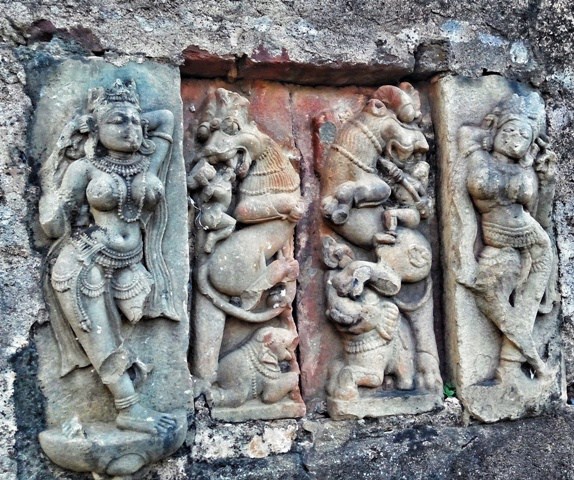
This led to the ruin of the system of Sambhu and Kupar Lingo, and Aryans emerged victorious. Then the brahmanical propaganda machine started creating mythological narratives in which Sambhushek was portrayed as a lecherous, horrendous, repugnant man who was slave to intoxicants and lived in cremation grounds. This was done to malign him as a fiend in the eyes of the masses. The name of the woman who was sent to entrap Sambushek was Parvati; together, they resemble the Gond name Sambhu-Parbati. One can surmise that this “Parvati” is an Aryan woman. Dr Kangali writes that Parvati, who was sent to bring about about the ruin of Sambhu, instead became so enamoured of him that she became his disciple and wife. That is why, in the Hindu mythology, Shiv is dark-complexioned and has long unkempt hair while Parvati is fair and good-looking.
Gonds celebrate a festival called “Sambhushek Naka” or “Shivja- garan”.[26] It is celebrated to commemorate Shiv’s regaining of consciousness on the 13th day from the full-moon day of the month of Magha. According to Gond belief, Shiv had saved the residents of all the five parts of the Earth by consuming poison and on this day, after awakening from a deep sleep, he acquired super consciousness. This festival is also known as “Sambhu Jagran”.
According to the legend, Sambhushek was a Yogi who had acquired “Siddhi” and also a valiant warrior. No one could enter his territory without his permission. The Aryans sent Parvati, the daughter of Daksha, to defeat him. But Parvati became a disciple of Sambhushek instead. At the time, Koya Gonds and Aryans were fighting a bitter war in which the Gonds held their ground. Indra, Brahma and Vishnu, as representatives of the Aryans, approached Sambhushek with an offer of compromise. Aryans and Gonds struck a deal and planned a joint feast on the full-moon day of the month of Magha to celebrate it. Aryans were actually planning to poison Sambhushek and the Gonds. Using his powers of asceticism, Sambhushek came to know of the real intent of the Aryans and warned other members of his community to refrain from the eating the food. He alone ate the food, which had snake poison, and fell unconscious, remaining in that state for 13 days. Meanwhile, his armies drove back the Aryan soldiers and killed a large number of them. The day on which Sambhu regained consciousness was celebrated by the Gonds.
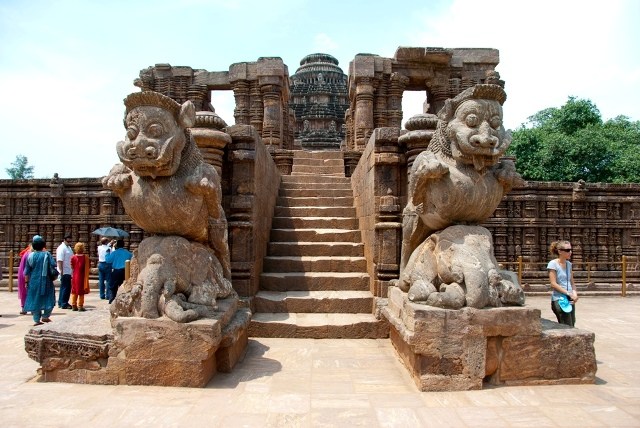
Students of literature, sociology and anthropology know how useful religious traditions, rituals and festivals of any community, especially the “live” narratives present in oral traditions, are. We have these “live” evidences to prove that Sambhushek and Badadev or Shiv belong to the same tradition (see http://jayseva.com/, a website created by Dr Kangali). His translations of Gond folk songs and his exposition of the legends behind festivals are self-explanatory and of great significance. Some of them are relevant to this article and we will discuss them.
The Gonds also celebrate “Shimga Pandum”, which is also known as Holi or “Shivamgaura”. But this is different from the Hindu Holi festival. Anuradha Paul (2014)[27] has written about the festival (as part of her research carried out under the guidance of Dr Kangali). The festival is celebrated in the evening of the full-moon day of the month of Phalgun. Fifteen days prior to the festival, the young boys of the village collect pieces of wood while hailing Sambhu-Gaura and heap them at the eastern border of the village. In the evening of the full-moon day (Poornima), the Bhumka (chief priest) of the village and others go to the place where the wood has been heaped and he performs an aarti. A deep pit is dug and ground turmeric, rice and ingots of iron are spread in the pit. Then, a wooden pole, plastered with a paste of turmeric and ground rice, is planted in the pit, and the pit refilled. This column is then worshipped. Then, other pieces of wood are placed around the column and the wood is lit. An idol of Parvati made of wheat flour is placed in the fire amid shouts of “Sambhu-Gaura Ki Jai”. Singing the Shivam-Gaura songs, the people circle the fire five times in the anti-clockwise direction. Next, a person dressed up as Sambhu attacks the fire with a trishul. Then the people circle the fire seven times and stay awake through the night, singing songs in praise of Sambhu-Gaura.
This festival celebrates the love between Shiv and Gaura. It is markedly different from what the Hindu myths tell us and in fact explains the missing links in them and answers the questions that naturally arise. For instance, the brahmanical Hindu mythology has it that Daksha Prajapati organized a yagya to which he did not invite Shiv. Then the myth says that an incensed Sati – the former avatar of Parvati – killed herself by jumping into the yagya fire. But according to Anuradha Paul, the Gond legend has it that Parvati was deployed to seduce and kill Sambhushek (Shiv). Parvati, though, fell in love with him and became his wife and disciple. The Aryans decided to kill Parvati to avenge her defection. Daksha Prajapati organized a great yagya to which he invited all Aryan kings but not Sambhushek. Parvati had to attend the ceremony all by herself. There, Parvati was humiliated and when she resisted, was pushed into the fire. The group of soldiers that had accompanied Parvati rushed back crestfallen shouting “Shivamgaura”. According to the legend, an enraged Shiv then opened his third eye and reduced the palace of Daksha to ashes. That is why the Gond people rub the ashes of Gaura’s idol on their forehead and take the oath to destroy the Aryans who had caused them great sorrow.
According to Anuradha Paul, the word “Shivamgaura” = Shiv (Sambhu) + Om + Gaura, where Om means “take away” and “Gaura” is Parvati. The word thus means “Sambhu, take away Gaura”.
Other Gond festivals, oral traditions and legends indicate that long before the Aryan-Asur conflict there existed a branch of the Koya Gonds called Raven, headed by Ravan. Ram and Laxman, the Aryan warriors, fought a war against Ravan. Hindu mythology also has it that Ravan was an ardent devotee of Shiv or Sambhushek and his son Meghnad, who was also a “Chakravarti” (ruler of all four directions), was a devotee of Mahakali, which is a form of Kali Kankali.
A Gond festival is called “Khadeyara Pandum” or “Gadh Puja” or “Meghnad Puja”. Gonds believe that Meghnad was the valiant son of Raven and a devotee of Dai Kali Kankali. He used to worship her in solitude and unarmed. Aryan warriors called Ram and Laxman deceitfully killed him – while he was worshipping unarmed. This legend is also part of brahmanical Hindu literature, which Brahmins recount with pride. Even today, the entire sequence of events is repeated in Gond songs.
A comparison of Gond and brahmanical myths and symbols thus shows that the character of Mahadev or Shiv or Shankar is the villified Sambhushek. Archaeological evidence suggests that the central character of Harappan culture was Sambhushek or Mahishasur or an earlier form of Sambhushek or Mahishasur, or an earlier similarly great Gond or an Asur king who wore buffalo horns as the crown. Gond mythology, symbols and archaeological evidence not only provide a logical link between Sambhushek and Mahishasur but also indicate that they were members or leaders of a group or community that shared or owned the same religious philosophy. Given the almost identical conspiracies hatched to defeat them as related by the Gond and Asur myths, Sambhushek and Mahishasur could even have been the same person or institution.
Asurs, Gonds, Buddha, Ravidas and Kabir
Dr Kangali concludes, on the basis of his extensive, thorough research, that the Asur (Lokayat), Gond and Buddhist philosophies had many similarities. In his own words:
“There are many similarities between Gond Punem philosophy and Buddha’s thinking. Pari Kupar Lingo acknowledges the existence of a natural power called ‘Parsapen’ (Budhal Pen, Phada Pen, Sajor Pen, Singabonga Pen, Bhilota Pen) in the form of Sallan Gangra (positive-negative). Buddha also accords the highest place to the power of nature. Pari Kupar Lingo believed that the material world has come into being on its own and its existence does not depend on any god, which is in perfect sync with what Buddha also propounded. Pari Kupar Lingo accords the status of Gonga (god-goddess) to ancestors. Buddha also accords similar status to Devas, but not of god – the invisible hand behind everything that happens. Pari Kupar Lingo spoke of Trishul Path, Buddha of Trisharan. Pari Kupar Lingo had enjoined five duties on his disciples; Buddha has propounded the principle of Panchsheel. Pari Kupar Lingo talks of the Munjokk principle, based on the elements of natural justice while Buddha has propounded the principle of Ahimsa.”[28]
Dr Kangali’s emphasis on these similarities and attempts at homogenization may lack the credibility for a serious discourse on the evolution of philosophy and religion but the direction and intent serve as clues themselves. If Dr Kangali, who is the greatest scholar of the known history of Gondi religion, found similarities between the philosophy of Buddha and Pari Kupar Lingo, he would have found religious, historical, sociological, psychological or mythological evidences to this effect. We have already discussed some of them.
These evidences and Dr Kangali’s emphasis on the similarities between Gond Punem and Buddhist philosophies indicate that the two had common roots and that it is possible that Buddhist philosophy evolved from Gond Punem philosophy and was its more refined or developed form. The Gond Punem materialist philosophy, which accorded the highest status to nature, possibly became Lokayat or Asur philosophy. The Sramans developed their philosophy by choosing the best from the Lokayat philosophy and the Sramanic tradition reached its zenith in Buddhist philosophy. All through this long journey, the Gond Punem, Asur, Lokayat, Mool Sankhya, Tantra and Buddhist philosophies were basically atheistic. They also maintained reverence for nature and equality – sallan-gangra, oon-poon, purush-prakriti (man-nature), man-woman. They consider the union of these negative and positive elements to be the basic foundation of this world.
The above arguments and analysis establish a philosophical unity between Asurs (indigenous inhabitants/Tribals), Koya Gonds, Buddhists, Kabirpanthis and the followers of Raidas. This can be understood not only through a study of Indian philosophy, mysticism and mythology but also through the grass-roots struggles aimed at a social revolution. The scholars who have studied these social movements of the modern times clearly state that Kabir was a revolutionary in the tradition of Buddha. Professor Linda Hess, who has studied the Kabirpanth in the Malwa and Nimar regions of Madhya Pradesh, concludes that there is a clear link between Kabir’s rebellion against the Vedas and the revolution initiated by Buddha.[29] Similarly, Gail Omvedt builds on Eleanor Zelliot and A.H. Salunkhe’s research and finds that Chokhamela and Tukaram were also close to the Buddhist intellectual revolution. It can be said that these researchers, influenced by Dr Ambedkar as they were, may have had a soft corner for Buddhism, hence this argument. But we can see that even before Dr Ambedkar embraced Buddhism, these tendencies were visible in the untouchable, indigenous communities. Dr Ambedkar’s adopting Buddhism was not an isolated incident. It is an outcome of the comprehensive research by scholars with similar ideas.
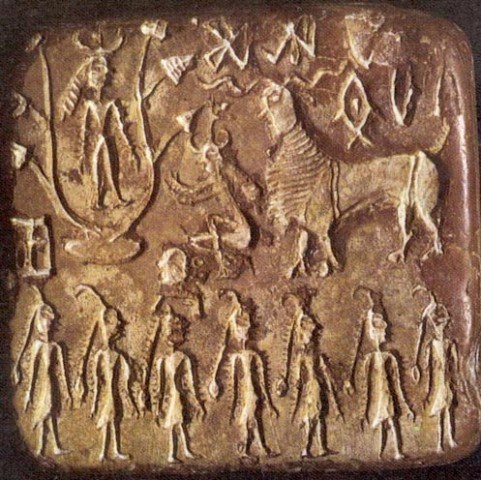
In this context, a mention of Swami Achhootanand would be pertinent, although he was more an admirer of Ravidas than of Buddha. He organized functions and processions in commemoration of Ravidas and founded the “Aadi Hindu Mahasabha”, which was the political wing of his movement.[30] His ideological successor, Acharya Ishwardutt Medharthi (1900-1971), expanded on his ideas and, in his booklet Bharat Ke Adivasi Purvajan Aur Sant Dharma, presented an alternative concept of Hinduism. Acharya Medharthi’s contention is that the Sant Dharma, based on equality, cooperation and fraternity, was the original religion of ancient India and what is referred to as Sanatan Dharma was the Sant Dharma. Then, he goes on to prove the unity of the Sant Dharma and Buddhism. He states that Buddha described all saints as “Buddhas” and thus was a part of the ancient Sant (Saint) Dharma tradition. Many people will be surprised to know that long before Dr Ambedkar, Acharya Medharthi and Prof P. Laxmi Narsu (1917) had proclaimed Buddhism as a solution to the miseries of the Untouchables. In the preface to Prof Narsu’s book The Essence of Buddhism, Dr Ambedkar calls it the best book on Buddhism. Professor Narsu[31] does not talk of any stream like “Aadi Hindu” or “Sant Dharma” but terms Buddhism as a religion that is good for humanity solely on the basis of the teachings of Buddha and his philosophy. But Acharya Medharthi, who himself came from a backward caste, tried to prove that Buddha’s teachings were basically the teachings of the Sant Dharma. Hence, Medharthi proposed that the followers of Sant Dharma pay special attention to the teachings of Buddha.[32] Later, Medharthi taught the Pali language to Dr Ambedkar. He also started a school, which Dr Ambedkar visited in 1940.[33]

Thus, long before Ambedkar, thinkers from the untouchable, indigenous communities had developed an appreciation for Buddhism. That is the reason when Dr Ambedkar embraced Buddhism on 14 October 1956, it had a ripple effect and a large number of Dalits of Kanpur converted to Buddhism. They decided to devote their entire life to propagating this religion. In Kanpur, the converts threw out idols of Hindu gods and goddesses from 22 temples of Kanpur and turned them into Buddhist shrines.[34] The underlining of similarities between the Sant Dharma and Buddhism was significant. It can be presumed that the similarity between Buddha and Ravidas’ egalitarian and anti-Varna preachings must have led to this conclusion. That is the reason many Dalit thinkers believe that Ravidas was inspired by Buddhism.[35]
The efforts of Swami Achhootanand, Acharya Medharthi and Bhandant Bodhanand Mahasthivir took them in different directions but what is relevant to us are their views on the indigenous peoples. Swami Achhootanand rejected the claims of the Aryan cultural superiority, arguing that indigenous peoples had a more advanced culture.[36] This is what the indigenous peoples’ and Asur movements want to prove. Bhadant Bhodhanand Mahasthivir (1874-1952) claimed that the local or indigenous civilization was much superior to the Aryan civilization.[37] Long before Who were the Shudras? was written, Bhadant Bodhanand Mahasthivir had argued that today’s Untouchables and Backwards are the truly indigenous peoples of India.[38] Those who argue that Ambedkar suddenly discovered “Who were the Shudras?” had better study the works of other scholars too, including Swami Achhootanand, Bhadant Bodhanand and Chandrika Prasad Jigyasu. Bhadant Bodhanand’s another important work “Mool Bharatvasi Aur Arya” could never be published but the theory it propounded and the direction it gave deeply influenced thousands of people. It was his constructs and the discourse initiated by him that made the word “Moolnivasi” (indigenous inhabitant) so important.[39] His enduring influence is history in itself.
What is interesting is that the most progressive and well-off sections of the Untouchables or Antyajs, who later came to be known as Dalits, and their thinkers are bringing the Bhakti movement close to Buddhism and are trying to establish that Ravidas was influenced by Buddhism. The “Nirguna” of Ravidas, Kabir and other Bhakti saints is being linked with the “Shunya” of Buddha. A closer look reveals that this socio-psychological approach is geared towards the synthesis of an egalitarian and equitable society. It is not only an attempt at synthesizing the Sant tradition based on “Bhakti” and the Buddhist tradition based on “knowledge” but also at ensuring that the “Nirgun Brahma” of the Bhakti saints does not become the brahmanical creator and regulator of the Universe. When Buddha’s negation of the other world and his acceptance of “Shunyata” is synthesized with the Nirgun Brahma, what emerges is not Bhakti in any sense. Hence, the streams that reach Buddhism via Ravidas and Kabir only prove that Buddha was the source of the inspiration for these two saints’ rebellion and pay tribute to Buddha’s “this-worldly” philosophy.
This attempt at synthesis on the philosophical and religious planes may not be valid and may not succeed but it does show that the Untouchables were gripped by a deep aversion for the otherworldly brahmanical or Aryan religion. Such literary and philosophical attempts are an outcome of that aversion. These attempts also show that the communities that have been victims of an exploitative social order are discarding a sentimentalist philosophy in favour of a materialistic one. After thousands of years, the Buddhist and Lokayat or Asur philosophy, which believe only in four Maha Bhootas, are drawing the most brilliant among the Dalit scholars towards them. Like the Untouchables then and Dalits today, the Backwards and indigenous peoples are striving to rediscover their lost culture, and the Mahishasur Movement exemplifies that trend.
Mahishasur Movement and re-rendition of mythology
Against the backdrop of all that we have discussed, we have a broader, proper perspective on the Mahishasur Movement and the re-rendition of mythology. The Mahishasur Movement has risen above the miry ground we have covered so far and is proving to be a torchbearer with the aid of which evolutionary struggles and conspiracies with respect to all the traditions can be seen and understood. The evidences and facts relating to Mahishasur available so far are based on the analysis of myths and the legends, folklore and rituals of the indigenous communities, including the Asur community, living in parts of Bengal, Odisha, Jharkhand and other states. This is “living” evidence. It proves that Mahishasur lives on in the memories of the Asurs of Chhota Nagpur and of other indigenous communities in Bundelkhand, Jharkhand and Chhattisgarh. For these communities, Mahishasur is not just a valiant king, a venerated ancestor and a mythical character but also a powerful warrior. Many tribal communities still worship Mahishasur. The Asurs of Jharkhand consider Mahishasur their ancestor and worship him, and many other tribal communities worship him along with Meghnad, Ravana and other valiant warriors described as Asurs.
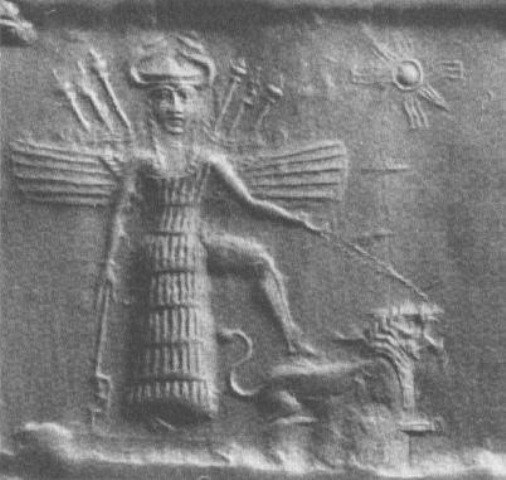
Similarly, the members of a tribe who live on the Majherdabri Tea Estate near Alipurduar, in West Bengal’s Jalpaiguri district, observe Durga Puja as a period of mourning. During this period, they neither wear new clothes nor leave their homes. They are Asurs and believe that Mahishasur was their ancestor.[40] Field and case studies thus prove that the Asur community still exists in this country and their mythological, religious beliefs can be studied and their origins traced. For them, Mahishasur is a hero and Durga, a villain. The Asurs of Majherdabri have an entirely different perspective on the Durga-Mahishasur battle:
“They believe that Durga killed Mahishasur and they are angry with Durga. When the entire state is immersed in festivities of Durga Puja, they mourn. Their children play with lions made of clay but all of them are headless. The first thing they do after buying a clay lion is sever its head. That is because Durga rides a lion. Anand Asur, 7, showing one such clay lion says, “I am an Asur. I hate lions, hence I broke its neck on the very first day.”[41]
Similarly, there are other tribal communities that worship Ravan and Meghnad and consider them their ancestors. They mourn the death of their heroes. The brahmanical myths surrounding the deaths of Rakshasas and Daityas seem to be fabricated and one-sided and on delving deeper, it becomes evident that all of them were killed by deceit. It is impossible to decipher what their crime was. The myths say Aryans punished them for obstructing yagyas. But all these myths – and especially the one on Mahishasur – hide some vital details. The Asurs believe this even today. According to Premkumar Mani (2012)[42], Mahishasur is not only associated with the Asur tribes, but also has links with OBC castes like Yadavs and Ahirs. He says:
“Mahish means male buffalo and Mahishasur means the Asur of Mahish. Asur is the opposite of Sur. Sur mean Deva. Deva means Brahman or Savarna. Surs did not do any manual work. Asurs means those who were involved in manual work – workers or labourers in today’s terms. Mahishasur would have meant those who reared buffaloes and sold milk, ie the Gwalas. The word Asur might have become Ahur, which could have become Ahir.”
This similarity of words and their meanings is not surprising. Given the way myths and social traditions have taken shape in India, there is a good possibility that these interpretations may be correct. Based on the theory that Aryans were foreign invaders, some scholars even claim that the Aryan myth of Durga is rooted in Sumerian/Mesopotamian myths. Sumerians believed in a goddess of fertility and war called “Inanna”, portrayed as riding a lion.[43]
It is believed that this goddess shaped many a myth in Iran, the Indus Valley Civilization and subsequently, in different parts of the Indian sub-continent.[44] Since this is plausible, it seems that the Aryans, while deceitfully destroying their enemies, incorporated the Koya Gonds and other indigenous inhabitants of India into their myths as villains. The goddess who is supposed to have killed these villains was created on the basis of their mythical Inanna. At different times in history, this goddess and other goddesses like her were portrayed as the killers of the villains. The Aryans were fair-complexioned and had sharp features, so were the idols of these goddesses. But Kali Kankali, who is associated with the character of Sambhushek and looks like the Mahakali revered by Meghnad, has been portrayed as dark and fierce. Another conspiracy is apparent here. An attempt was made to turn the Dai Kali Kankali worshipped by the Gonds into a loathsome character but was later assimilated just as Sambhushek was assimilated as Mahadev. Although there is hardly any material available in India to link Inanna with Durga, a clear narrative emerges from the vocal traditions, legends and folk tales prevalent among the Asurs and other tribal communities regarding Mahishasur’s murder, and among the Gonds regarding the attack on Sambhushek. These narratives also indicate that the creators of the Aryan goddess were inspired by Inanna and they established her here as the goddess of fertility and war. Thus, this narrative, which emerges from the oral tradition of the Gonds and Asurs, becomes the most important and decisive among the narratives of the Aryan-Gond and subsequent Aryan-Asur conflicts. This means that Mahishasur is an important link in the religious and philosophical tradition of the Asurs and Gonds. The Mahishasur Movement thus has great implications and the potential of upturning the religious-philosophical discourse of India.
Conclusion
The Mahishasur Movement and the re-rendition of myths that has begun with it are, by no means, an inconsequential development. It has a vast and significant historical, philosophical and religio-cultural backdrop and few movements in Indian history have discovered as many lost links as this movement has. In the past, similar research has been carried out, based on the philosophical, religious or linguistic similarities between an existing and a lost tradition. But it is for the first time that a movement centred on a philosophical discourse, with solid sociological and anthropological footing, has emerged. A philosophical and religious link is emerging between the surviving Gonds and Asurs and the Dalits, Backwards and indigenous communities that figure in their myths. They seem to share common myths and culture. More importantly, these links indicate that all rebel traditions in ancient India belonged to the “Moolnivasis”, the indigenous peoples.
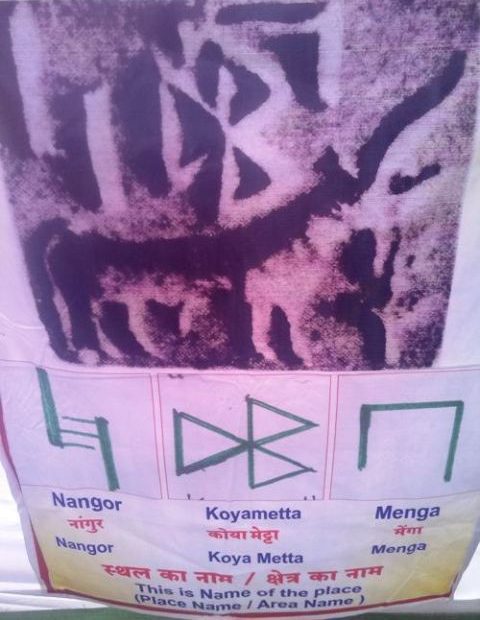
The same trends are discernible in the research undertaken by scholars in the past. A comprehensive study of the ancient Indian materialism brings to light an evolutionary link between the ancient Asurs who believed in Lokayat philosophy and the Buddhists who came later. It seems that the Lokayat materialistic philosophy that arose among the Asurs and other indigenous inhabitants was rooted in the Mool Sankhya and Tantrik philosophies, and the Lokayat philosophy, in turn, became the philosophical basis of the Sraman tradition. It gave a strong materialistic foundation to the philosophy of Charvak (seeking happiness in this world) and to the Nirjhara Buddhist philosophy about the pains of this world. It is entirely possible that the Lokayat philosophy of the Asurs (whose adherents included Ravana and Meghnad living in far-off Lanka), which had evolved from the Tantra and Mool Sankhya philosophies, ultimately bloomed as Buddhism. Just as Sambhushek and Mahishasur and the culture of Asurs were destroyed by deceit and later assimilated into the brahmanical religion, Buddha and Kabir also have been assimilated. This formulation is the common thread that runs through ancient materialism, modern Buddhist mysticism and the Bhakti movement of the medieval saints.
This essay proposes to make three claims. One, that the Aryan-Koya Gond conflict predated the Dev-Asur battle by many centuries. Two, that the Sambhushek of the Gonds, the Mahishasur of the Asurs and the Mahadev of the brahmanical Hindu religion are the same person or institution and the present-day Shiv or Shankar is their distorted, brahmanized form. Three, the Sraman philosophy and the Punem philosophy of Pari Kupar Lingo are closely linked and that it was on the foundations of the Punem philosophy that Gautam Buddha developed his philosophy. A deeper research into the myth of Mahishasur and Sambhushek, the Gond religion, and Asur, Sraman, matriarchal, Tantrik and Lokayat philosophies, is needed. Such a research would unearth the original structure of Bahujan society, its evolution and its downfall and would enable us to understand the brahmanical or Aryan conspiracy in its totality. It would also expose the Sanatan conspiracy that is being hatched in our times. It would not only lay before us the history of the evolution and fall of Bahujan society but also help the progressives, the liberals and the various factions of the Bahujans forge a united front to fight brahmanical hypocrisy and its future conspiracies. Ultimately, this would form the foundation for building a scientific and egalitarian Indian society, which is atheistic, a preserver of nature, matriarchal and has faith only in “this world” while negating the “other world”.
Translation: Amrish Herdenia; copy-editing: Parmanand Baiga/Anil
[1] Ambedkar, B.R. (2009), Riddles in Hinduism, Createspace Independent Publishing.
[2] Rosalind, O’Hanlon (1985), Caste, Conflict and Ideology: Mahatma Jotirao Phule and Low Caste Protest in Nineteenth-Century Western India, Cambridge University Press.
[3] Ranjan, Pramod (ed) (2014), Mahishasur, Dusadh Prakashan, Kalyanpur, Lucknow.
[4] Ambedkar, B.R. (1970), Who were the Shudras? How they came to be the Fourth Varna in the Indo-Aryan Society, Thackers, Bombay.
[5] Keer, Malase and Phadake (eds) (2006), Phule Samagra Vangmay, Government of Maharashtra, Mumbai, pp 119-201.
[6] Williams, George M. (2003), Handbook of Hindu Mythology, Santa Barbara, p 130.
[7] Chattopadhyaya, Debiprasad (1992), Lokayat: A Study in Ancient Indian Materialism, People’s Publishing House, New Delhi.
[8] Christoph von Furer-Haimendorf, Michael Yorke and Jayaprakash Rao (1982), Tribes of India: The Struggle for Survival, University of California Press.
[9] Goswami, Lovely (2014), Pracheen Bharat Mein Matrasatta Aur Yaunikta (Hindi), Dakhal Prakashan, Delhi.
[10] Kangali, M. (2011), Pari Kupar Lingo Gondi Punem Darshan (Hindi), Chandralekha Kangali, 48, Ujjwal Society, Nagpur.
[11] Ambedkar, B.R. (1970) Who were the Shudras? How they came to be the Fourth Varna in the Indo-Aryan Society, Thackers, Bombay.
[12] Ross, F. (2008), Buddhism (20 volumes), Routledge Library Editions, London.
[13] Keith, A. (1925) The Religion and Philosophy of the Vedas and Upanishads (Harvard Oriental Series), Harvard University Press, Volume 31, p 1.
[14] Chattopadhyaya, Debiprasad (1992), Lokayat: A Study in Ancient Indian Materialism, People’s Publishing House, New Delhi.
[15] Kangali, M. (2011), Pari Kupar Lingo Gondi Punem Darshan (Hindi), Chandralekha Kangali, 48, Ujjwal Society, Nagpur p 7.
[16] Kangali, M. (2011), Dongargarh Ki Bamlai Dai Bamleshwari (Hindi), Chandralekha Kangali, 48, Ujjwal Society, Nagpur.
[17] Kangali, M. (2002), Decipherment of Indus Script in Gondi, Chandralekha Kangali, 48, Ujjwal Society, Nagpur.
[18] Dasgupta, S.N. (1922-1955), A History of Indian Philosophy, Cambridge University Press.
[19] Chattopadhyaya, Debiprasad (1992), Lokayat: A Study in Ancient Indian Materialism, People’s Publishing House, New Delhi, p 161.
[20] Omvedt, Gail (2003), Buddhism in India: Challenging Brahamanism and Caste, Sage Publications, New Delhi.
[21] Dr Dharamveer (2013), Kabir: Khasam Khushi Kyun Na Hoy (Hindi), Vani Prakashan, Delhi.
[22] Chattopadhyaya, Debiprasad (1992), Lokayat: A Study in Ancient Indian Materialism, People’s Publishing House, New Delhi.
[23] Kangali, M. (2011), Dongargarh Ki Bamlai Dai Bamleshwari (Hindi), Chandralekha Kangali, 48, Ujjwal Society, Nagpur.
[24] Kangali, M. (2011), Pari Kupar Lingo Gondi Punem Darshan (Hindi), Chandralekha Kangali, 48, Ujjwal Society, Nagpur, p 71.
[25] Ibid, p 141.
[26] http://jayseva.com/shiv-jagran-pooja/
[27] Paul, Anuradha (2014), Gond Utpatti, Itihas tatha Sanskriti (Hindi); Rashtriya Pustak Nyas, New Delhi.
[28] Kangali, M. (2011), Pari Kupar Lingo Gondi Punem Darshan (Hindi), Chandralekha Kangali, 48, Ujjwal Society, Nagpur.
[29] Hess, Linda and Singh, Sukhdev (2002), The Bijak of Kabir, Oxford University Press.
[30] Gooptu, Nandini (1993), ‘Caste and Labour: Untouchable Social Movements in Urban Uttar Pradesh in the Early Twentieth Century’, in Robb, Peter (ed), Dalit Movements and the Meanings of Labour in India, Oxford University Press, New Delhi, p 277-98.
[31] Narsu, P.L. (2010), The Essence of Buddhism, Divyansh Publications, Lucknow.
[32] Medharthi, Ishwardatt (1939), Bharat Ke Adimvasi Urvjan Aur Sant Dharm (Hindi), Bharatiya Ved Vidyalaya, Kanpur.
[33] Bellwinkel, M. (2004), ‘Roots of Ambedkar Buddhism in Kanpur’, Jondhale, Surendra and Beltz, Johannes (eds), Reconstructing the World: B.R. Ambedkar and Buddhism in India, Oxford University Press, p 245-66.
[34] Lynch, Owen (1969), The Politics of Untouchability: Social Mobility and Social Change in a City of India, Columbia University Press.
[35] Zelliot, Eleanor and Mokashi-Punekar, Rohini (2005) (ed), Untouchable Saints: An Indian Phenomenon, (op cit).
[36] Omvedt, Gail (1994), Dalits and the Democratic Revolution: Dr. Ambedkar and the Dalit Movement in Colonial India, Sage Publications, New Delhi.
[37] Saathi, Chhedi Lal (1999), Bhadant Bodhanand Mahasthivir: Jeevan aur Karya, (Hindi), Buddha Vihar, Lucknow.
[38] Ksheersagar, R.K. (1994), Dalit Movements in India and its leaders, MD Publications, New Delhi.
[39] Kumar, Vivek (2006), India’s Roaring Revolution: Dalit Assertion and New Horizons, Gagandeep Publication, New Delhi.
[40] http://www.bbc.com/hindi/india/2009/09/090927_festival_mourners_adas.shtml (accessed on 11/12/15)
[41] Ibid
[42] Ranjan, Pramod (ed) (2014), Mahishasur, Dusadh Prakashan, Kalyanpur, Lucknow.
[43] http://www.examiner.com/article/inanna-dumuzi-and-solomon
[44] Volpert, S. (2006), Encyclopaedia of India, Charles Scribner’s Sons
Forward Press also publishes books on Bahujan issues. Forward Press Books sheds light on the widespread problems as well as the finer aspects of Bahujan (Dalit, OBC, Adivasi, Nomadic, Pasmanda) society, culture, literature and politics. Contact us for a list of FP Books’ titles and to order. Mobile: +917827427311, Email: info@forwardmagazine.in)

